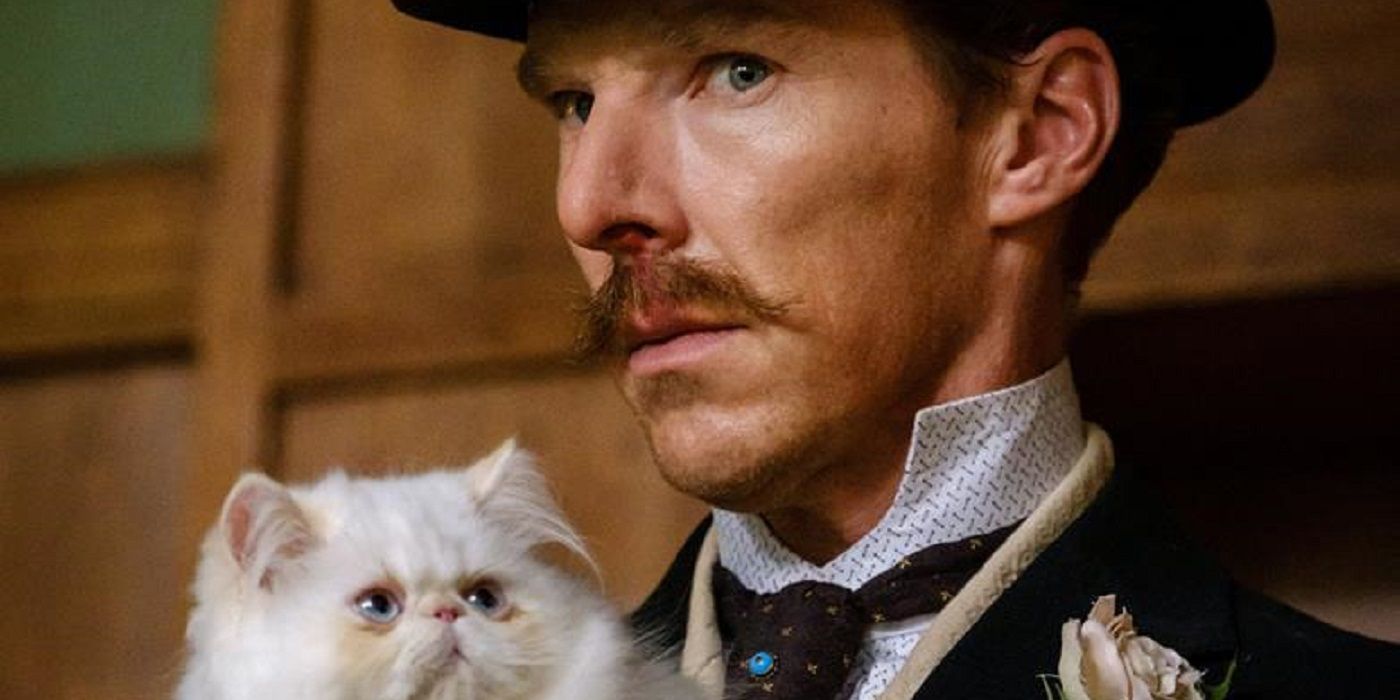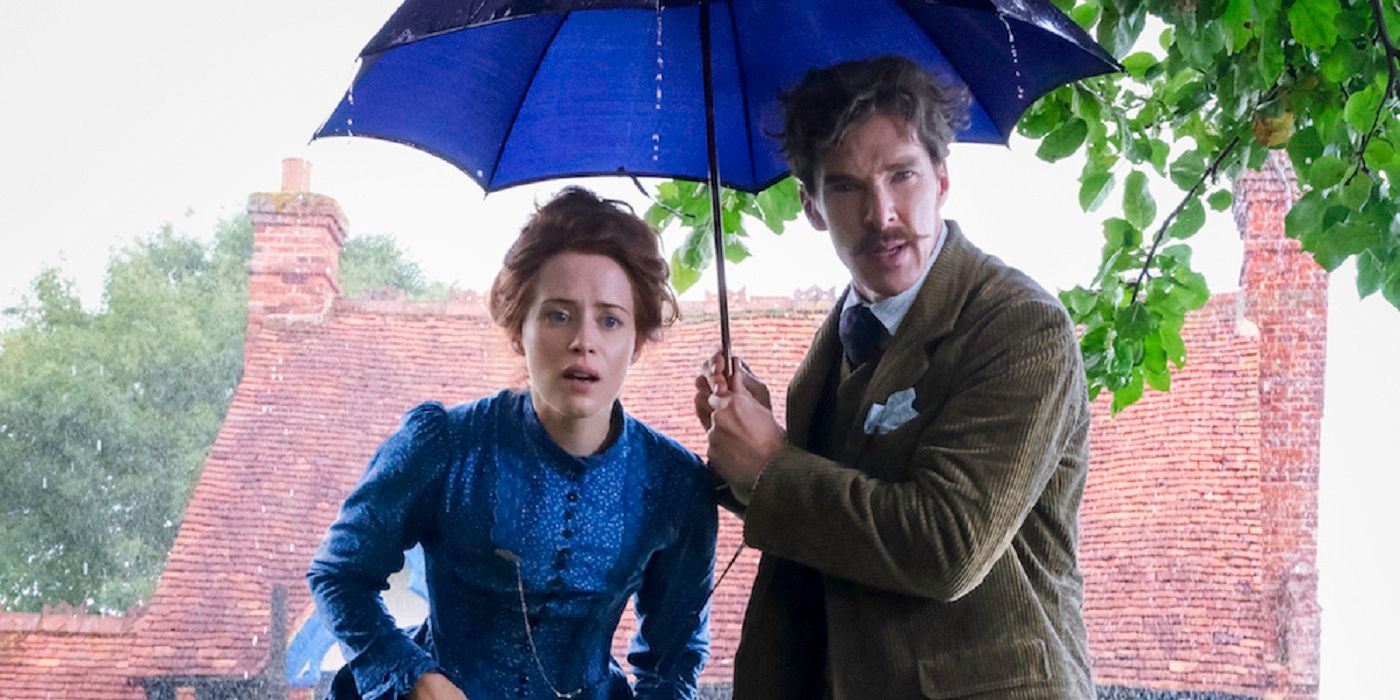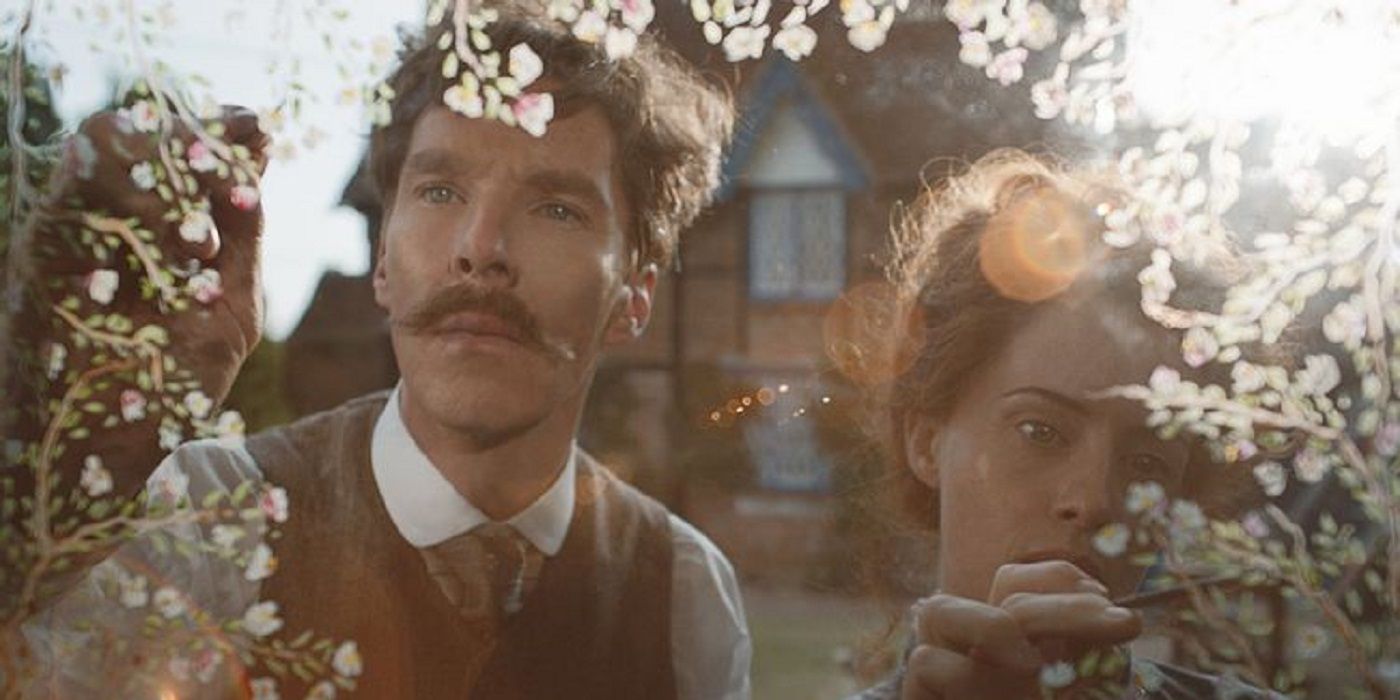Cats are beloved pets now, but they’ve historically been thought to bad omens, the companions of witches, or worshipped. House pets they were not. At least, not until the artist Louis Wain changed the attitude of the public through his work, in which he painted anthropomorphic cats, popularizing them as cute and friendly creatures that could bring comfort to humans. The Electrical Life of Louis Wain, directed by Will Sharpe from a screenplay by him and Simon Stephenson, is a biographical drama that delves into Wain’s personal and professional life. Examining the inspiration for his famous cat drawings, the film is a whimsical, warm, captivating, and tonally uneven story about the illustrator.
Louis Wain (Benedict Cumberbatch) is an artist who is struggling to make ends meet for his family, which consists of his mother and his five sisters, following the death of his father. He takes on odd jobs before he is hired by Sir William Ingram (Toby Jones) as a full-time illustrator for The Illustrated London News. Things are alright for a while and his sister Caroline (Andrea Riseborough) hires a governess. Suffice to say that Louis is immediately taken with the whip-smart and thoughtful Emily Richardson (Claire Foy), though their blossoming relationship becomes the talk of the town (and not in a good way). The two marry, but Emily is diagnosed with breast cancer not long after, with the couple spending their time together in London with their pet cat Peter, which brings Emily comfort. Inspired by Peter and his ability to soothe, Louis begins drawing the feline and others, publishing hundreds of anthropomorphic cat illustrations over the course of his career.
The Electrical Life of Louis Wain is often as eccentric as the man at its center. Sharpe digs into Wain’s life without inhibition, touching upon its several aspects that shaped, detracted from, and inspired him. Biopics of late have been fairly by-the-book, but Sharpe treats Wain as a person rather than as an icon kept at arm’s length. Wain is awkward and bumbling in his early career, struggling to make ends meet as the only son in his household. His mind is all over the place, his sketches quickly drawn like he is attempting to get it out of the way so as to focus on the things, like electricity and the strength and beauty of lightning, that have captured his attention. He has multiple patents and has even written an opera, and the director’s handling of this part of his life is as fast-paced and jumbled as Wain. The film finds its warmth and steadiness just as Wain meets and falls in love with Emily, who teaches his youngest sisters. This portion of the film can only be described as a sweet romantic comedy, suffused with tenderness and heartwarming moments that ultimately become the bedrock for the remainder of the film, which becomes erratic and tonally inconsistent thereafter.
However, it maintains its groundedness due to the strength of Louis and Emily’s relationship, which is also the foundation of his cat illustrations that define the rest of his life. Although the film is often quick to bounce from one aspect of Wain’s life to the next in kinetic bursts of energy, there is a lovely through-line that carries it to the end. Elevating the film is also Benedict Cumberbatch’s superb central performance. The actor portrays Wain as an often rumpled, if deeply caring, man who is easily distracted, but who is mesmerized by the world in equal measure. Most of which is showcased through his relationship with Claire Foy’s Emily, in whom he sees the beauty in life and in art. With Emily, he is incredibly gentle and the pair have a whole lot of chemistry together, with Foy playing a woman who is not so concerned with what society has to say about her than she is in teaching and loving.
The film is carefully crafted in its attempts at understanding Wain’s mind, from the recurring nightmares that haunt him to the brief glimpses of happiness that come with fame, though none of it can offset the deep and lingering grief following the death of Emily. While Wain brought animals to life through art, Sharpe and cinematographer Erik Wilson bring him to life through scenes that depict him through paintings that are vivid in color and serene in the occasional moments of peace the illustrator feels as reality, and his image of it, blends together in perfect harmony with his own craft. Sharpe never defines the illustrator by his mental illness (it’s been argued that Wain was schizophrenic) even when it starts to greatly impact his life. When the film is at its best, it’s quirky and oddly poetic. It’s also as messy as Wain’s life was, somewhat struggling to find that electricity that fuels the story.
But The Electrical Life of Louis Wain is so utterly charming and buoyant that it makes even the frustrating aspects of the film forgivable. The tinges of darkness linger at the peripheral before it comes seeping to the forefront, though Sharpe doesn’t let it sit for too long before bouncing back to the lighthearted tone thanks, in part, to Olivia Colman’s effective and rather jubilant narration. Still, the end of Wain’s life is filled with nothing but sadness as his mental health deteriorates, his fame dwindles, and the joy he brought to so many all but wash away. The film makes it apparent that, although his drawings were beloved, Wain himself didn’t live as wondrous a life no matter how many lives he touched through his work. It’s a reminder that careers ebb and flow and the life behind it isn’t as happy as some would like it to be.
Despite the tonal inconsistencies, The Electrical Life of Louis Wain is never dull or devoid of heart as it works to explore Wain through all of his complexities at various points in his life. Its eccentricities are what keep it afloat as Sharpe warmly and tenderly delves into the man at the center of it all. It’s a biopic that is equally charismatic and poignant, touching and dark. It’s the amalgamation of these things, fueled by an exuberant amount of energy and care, that makes this film work even when all the pieces don’t exactly fit.
The Electrical Life of Louis Wain released in theaters on October 22 and is available to stream on Amazon Prime Video as of November 5, 2021. The film is 111 minutes long and is rated PG-13 for some thematic material and strong language.
This review was originally published during the 2021 Toronto International Film Festival.



